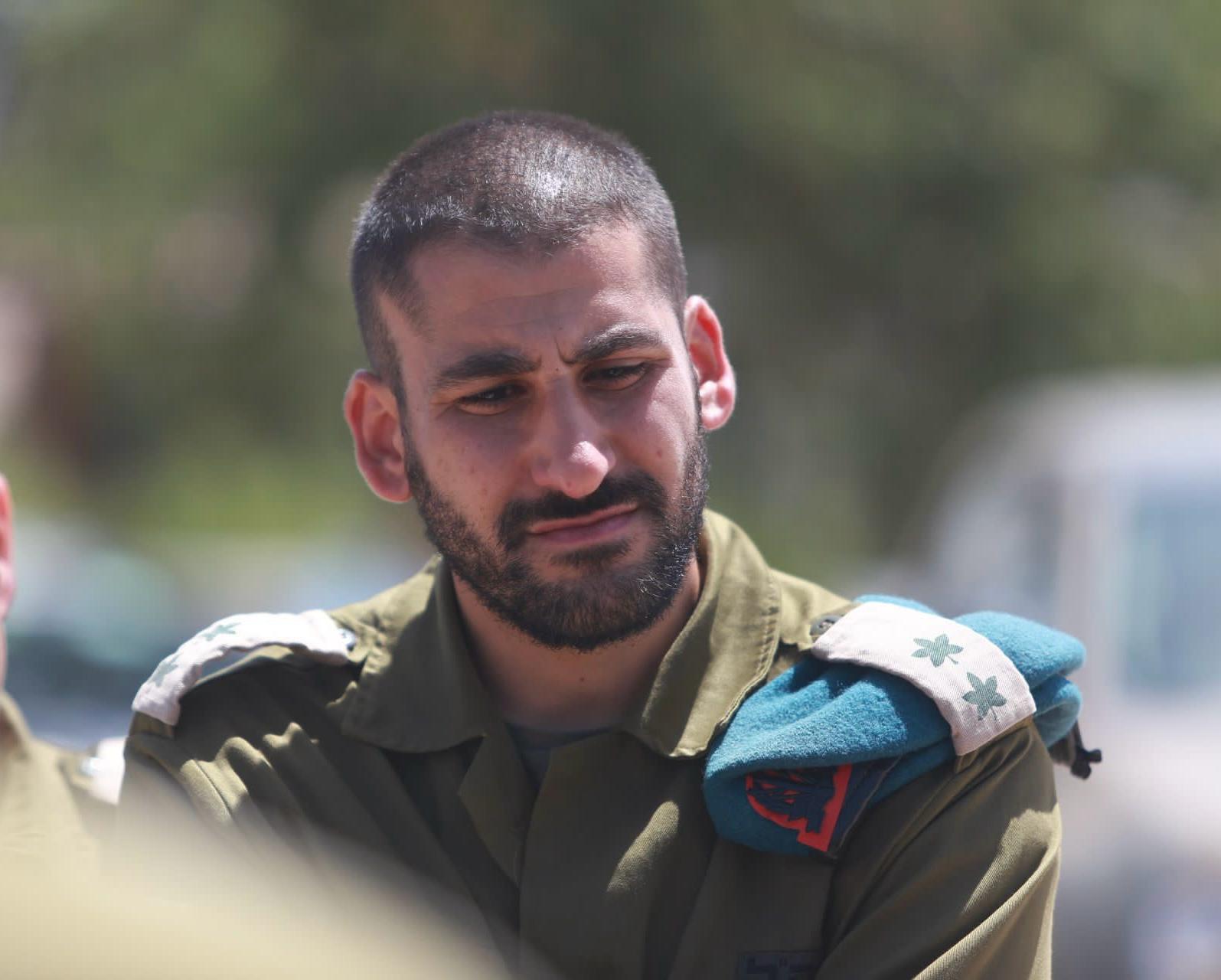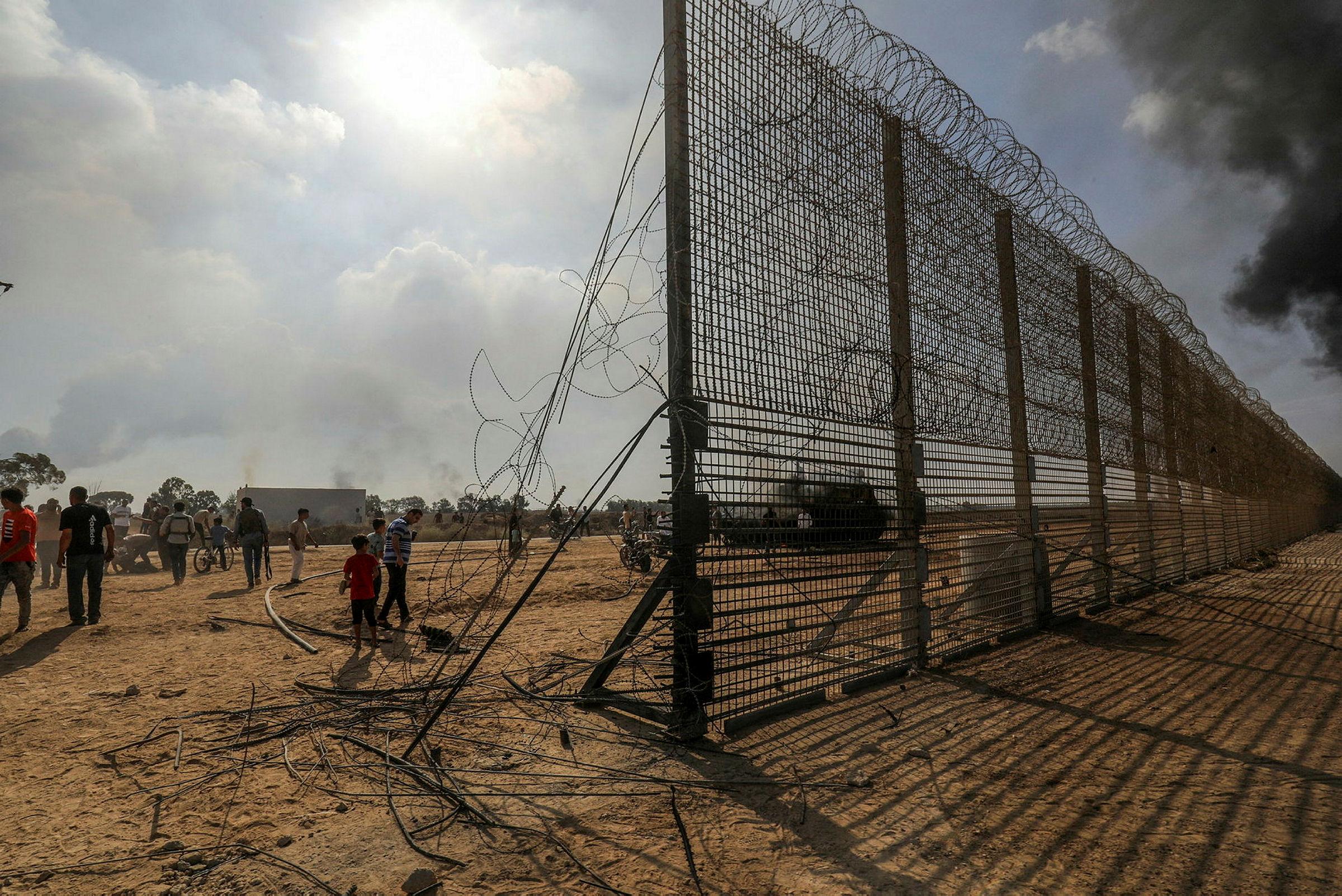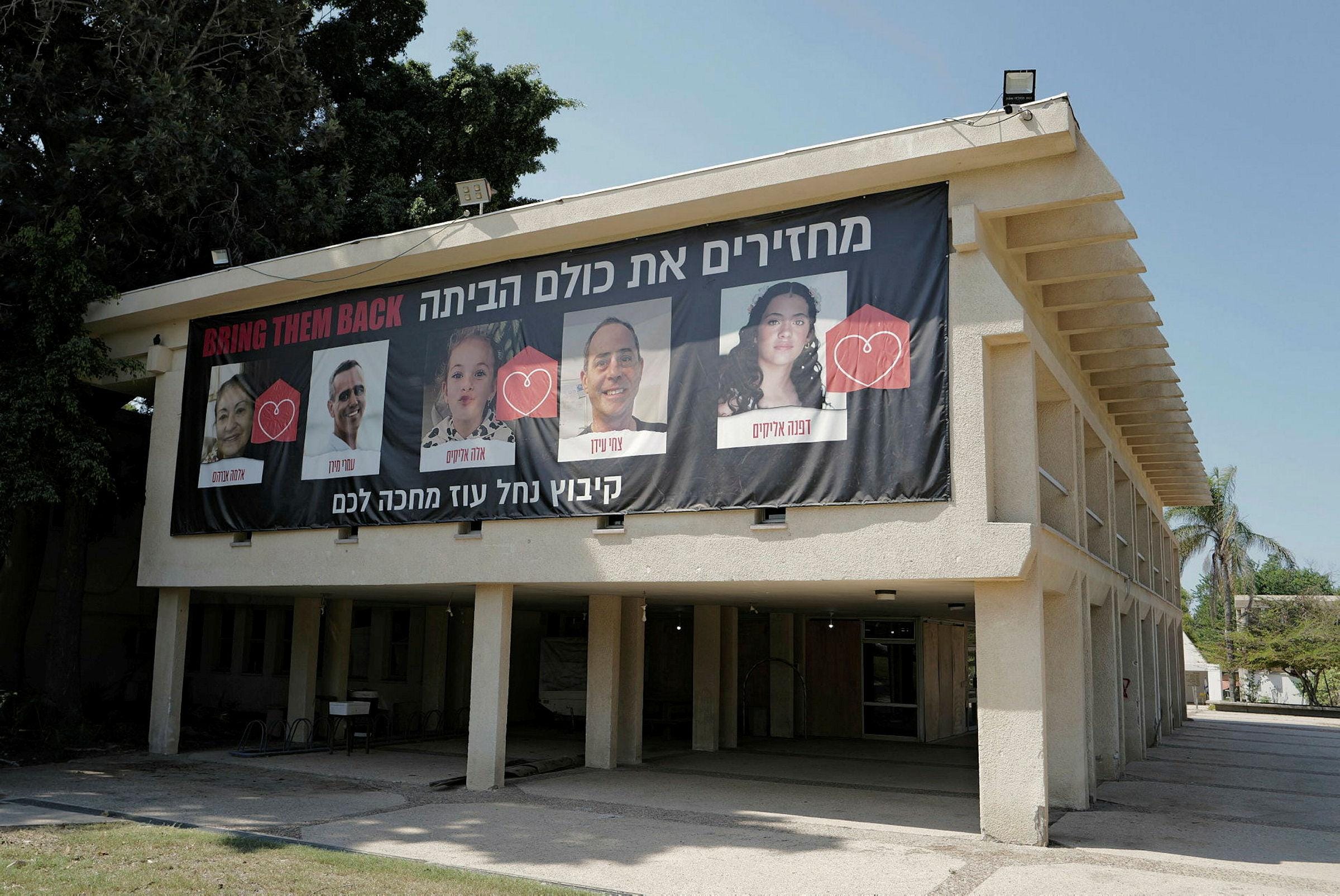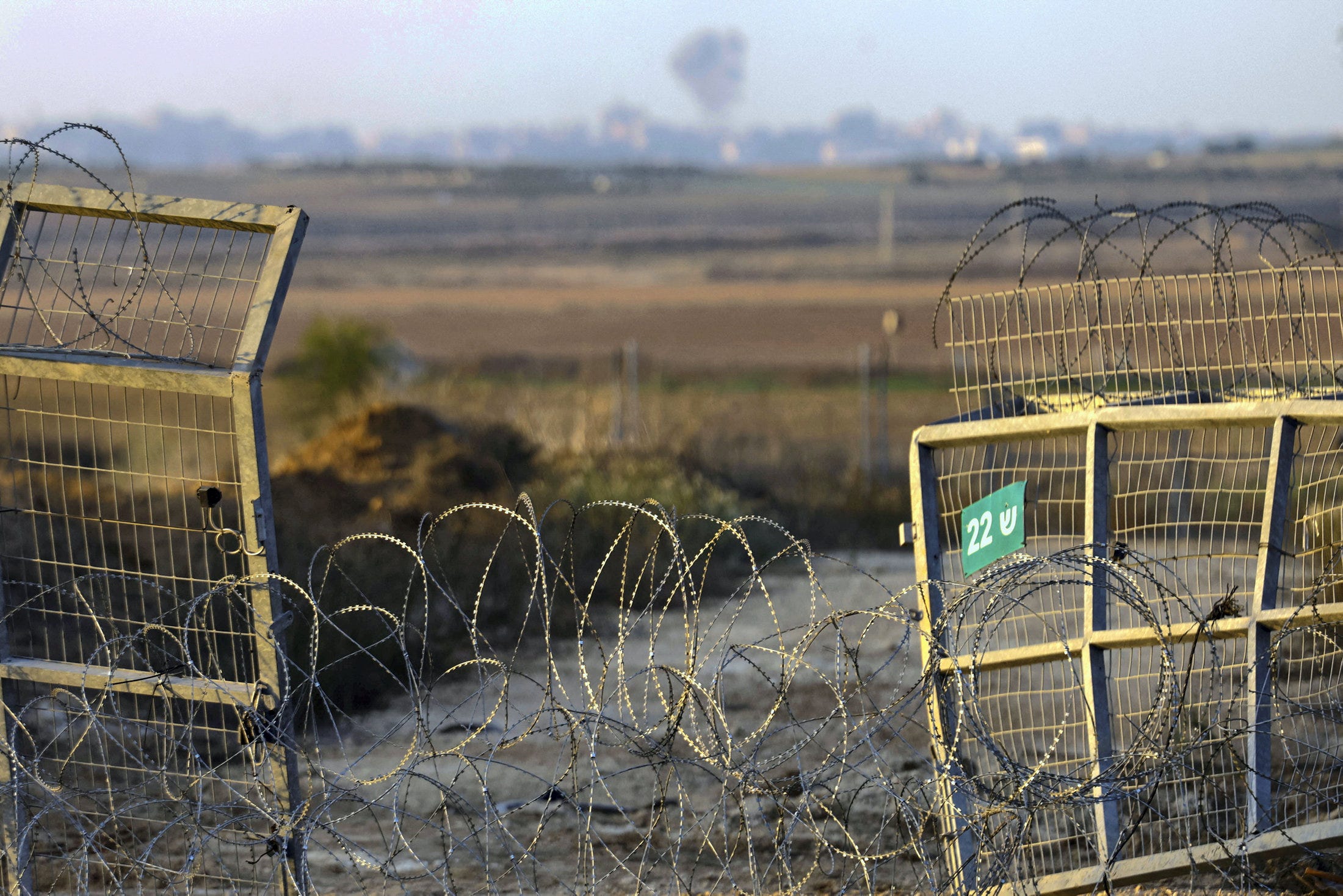Israeli Army Admits Operational Setback at Re'im Base, But Ignores the Moral Cost
Israeli Army Recognizes Its Operational Failure at the Re'im Base, but Not Its Moral One
The best soldiers spent hours guarding a base empty of terrorists even as residents of the area were being slaughtered, military probe finds
June 13th, 06AM June 13th, 06AMThe army's inquiry into the battle to defend the Re'im base on October 7, 2023 said it "failed in the mission of defending the Re'im base." But it said nothing whatsoever about the moral failures of senior officers – including the commanders of the Gaza Division and the Northern Brigade – who violated the IDF ethos.
The invading terrorists left the base at around noon, the inquiry found. Yet despite this, 67 soldiers from two of the army's most elite units – Shaldag and Sayeret Matkal – were ordered by their commanders to continue guarding the base until 7 P.M., even as two kilometers away, Hamas terrorists were at the height of a campaign of slaughter in the homes of residents of southern Israel.
Moreover, while the soldiers were ordered to arrange helicopter evacuations for soldiers from the division who were wounded during the fighting, the inquiry makes no mention of the fact that outside the base were wounded civilians who had been abandoned, but they were not airlifted to the hospital.
The inquiry was limited to the conduct of the defensive battle at the base, without getting into the senior officers' performance and responsibility. It also refrained from investigating the conduct of the divisional and brigade war rooms on that day and why they exerted no influence over the battle at the base.
All of the army's previous inquiry reports found that the Gaza Division collapsed on October 7 and failed for hours to give the soldiers a clear picture of the situation. Yet the head of the inquiry into the battle at Re'im Base, Col. Itzik Alfasi, wrote that both the division's war room and that of its Northern Brigade "never stopped functioning."
As for the question of how functioning war rooms managed to completely forget the existence of Kibbutz Nir Oz and abandoned thousands of civilians for hours without sending forces to help them, he wrote that while the war rooms were functioning, they "didn't function well."

Three officers fell in the defense of Re'im Base – Lt. Col. Sahar Machalof, Maj. Ido Yehoshua and Capt. Rom Shlomi – as did Cpl. Ilay Azar and Sgt. Osher Shmaiya. Shmaiya's civilian father was also killed, at the intersection near the base's entrance.
Hamas had designated Re'im Base as strategically important for the success of its raid into Israel. It spent years collecting high-quality intelligence about every building in the Gaza Division's headquarters. It learned where senior commanders' offices, the war rooms and the sleeping quarters and studied the operational routines of the soldiers who served there in previous years.
For the attack itself, it prepared a skilled force of 60 terrorists divided into two groups. Their goal was to capture the divisional headquarters and thereby sever the chain of command and the lines of communication.
The inquiry found that the base was never captured. But Hamas nevertheless succeeded in its efforts to disrupt the chain of command and the lines of communication.
Although the base lies near the border with the Gaza Strip and the division was defined as a strategic target for the enemy in the event of a raid, the inquiry said, its commanders hadn't prepared to defend it. Moreover, the base was exposed to rocket and mortar fire, and for years, there had been casualties there. Yet the inquiry found that its rocket-proofing and other defensive infrastructure was inadequate.

In addition, the report said, the commanders presided over a flawed operational culture. This included the facts that only a minority of people on the base carried guns, that families were hosted there even while the soldiers they were visiting were on duty, and that information security about the structure of the base was highly vulnerable to enemy penetration.
The inquiry also found that there had been problems for more than a year with some of the base's crisis management and defensive systems, including public address systems, perimeter cameras and the electronic fence, but they were never fixed.
In the first hours of the battle, the report continued, there was no coordination between the forces involved. It described the deployment of three special forces units for hours when no actual fighting was occurring as an error in judgment. The forces from both Sayeret Matkal and the paratroops were ineffective, it added, though Shaldag soldiers fought heroically inside the base and paid with their lives.
Given the absence of control over the base's gate, civilians could enter even though terrorists were inside, the report said. Nor did soldiers stop some of those civilians from leaving later on, and some of them were killed after they left.
The fitness level of the base's defensive force was poor. And despite the base's proximity to the border, many of its members weren't combat soldiers and hadn't undergone weapons training, the report said.
When the alarm siren sounded at 6:29 A.M., standard procedure called for soldiers to enter the base's rocket-proofed areas. But a forward command post jeep carrying trackers from the division's Southern Brigade was headed north at the time and encountered two wounded civilians.
While treating them, the trackers saw around 30 terrorists heading toward them in trucks and motorcycles. Following an exchange of fire, the trackers retreated toward Re'im to warn the base of a possible infiltration and stationed themselves at the gate to prevent that.

At 6:50 A.M., some of the trackers went to Nahal Oz in response to reports of a penetration there. Upon leaving the base, they saw 22 civilians, some with gunshot wounds, fleeing to Re'im from the Nova rave. They told the civilians to enter a nearby house until it was safe to leave and then headed for the war room.
Only at 7:20 A.M., when terrorists were about to break into the base, did the Gaza Division's commander, Brig Gen. Avi Rosenfeld, order the trackers' officer to take command of the base's defense and keep the terrorists out. Thirteen trackers then deployed at the entry gate and, for half an hour, waged a holding action against the 30 terrorists trying to break in.
At 7:40 A.M., another 30 terrorists reached the base's parking lot. Under cover of the battle at the gate, they managed to break through the fence around the base and enter. It later turned out that the fence's technological warning systems had stopped working a year earlier.
One terrorist cell reached the passageway between the male and female soldiers' barracks and threw grenades at the rooms. Another entered the male soldiers' barracks. Soldiers from the divisional commander's forward command post went to help the soldiers in the barracks, who were unarmed and therefore hid in toilet stalls and showers.
At this point, the forces guarding the gate decided to split up. One of the two groups, led by the commander of the division's teleprocessing battalion, went to rescue the soldiers hiding on the base.
Between 8:02 and 8:06 A.M., the air force carried out several strikes near the gate, where terrorists were waiting to prevent reinforcements from arriving. But only at 10:18 A.M., almost three hours after the attack began, did the first reinforcements show up – a Shaldag officer and 15 of his soldiers who arrived by helicopter. At 11 A.M., the divisional commander ordered the Shaldag officer to clear the base of terrorists.

Throughout this time, the fighting continued. Only at around noon did the last terrorist leave. But Shaldag, which wasn't aware of this, then sent another 20 soldiers to the base.
At around 12:30 P.M., at the Shaldag commander's orders, a helicopter was summoned to evacuate three wounded soldiers and two civilians who had fled to the base from the Nova rave.
At 1 P.M., when the base was already empty of terrorists, another 50 soldiers from Sayeret Matkal arrived to assist in the base's defense. Thus in total, roughly 70 soldiers from two of the army's most elite units were on the base. They were the best trained and best equipped fighters present in the Gazan border area at the time. But they were used to search the base, extricate soldiers who were in hiding and evacuate the dead.
Then, at around 6 P.M., a company of soldiers from the Paratroops Brigade's elite unit left the fighting at nearby Kibbutz Re'im, even though terrorists were still present on the kibbutz. It was only at around 7 P.M. that the Shaldag officer told the divisional commander the base was free of terrorists.
Post a Comment for "Israeli Army Admits Operational Setback at Re'im Base, But Ignores the Moral Cost"
Post a Comment